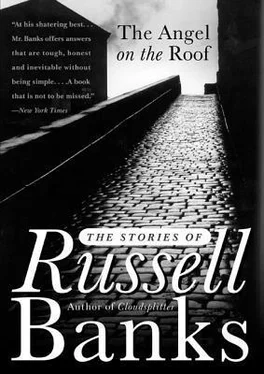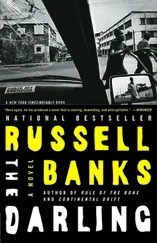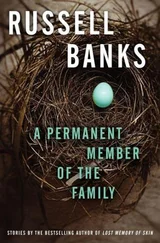In the graveyard beside the church on the hill is your mother’s grave. You will depart this city in an hour by train for Baltimore. You have eaten breakfast alone in the hotel dining room and have arranged for a driver to carry you first to the church on the hill, then back into the city to the railroad station. You pay your bill, lift your satchel, and leave the hotel for the carriage waiting outside. You stop a moment on the veranda and admire the soft morning sunlight on the brick buildings and sidewalks, the elm and live oak trees that line the streets, the white dome of the capital building a few blocks east, and beyond that, with the river between, the white spire of the church next to where your mother’s body was buried nearly four decades ago. This will not be the first time you have visited your mother’s grave, to stand before it with your mind mutely churning, and then, after a few moments of vertigo, to leave. You have made this pilgrimage hundreds of times, as a young boy, as an adolescent, and as a man, even in military uniform, even while drunk. And it has always been the same. From the very first, when Mrs. Allan took you outside the church after the service one Sunday morning and walked to the graveyard and stood hand in hand with you above the freshly cut plaque laid in the ground and told you that your mother’s body was buried here, precisely here, at this spot, from that very first time until this, it has been the same for you. Silence in your ears, no noise from without, no words from within, and a feeling, painful and frightening, of falling, as if down a well that reaches to the center of the earth. Yet, despite that feeling, you have returned to this spot compulsively, like an animal driven by an instinct. You have no sense of there being a reason for it. It is as if you are drawn there by a force that originates there, at the grave, not here inside your own head, among your sensations, memories, and ideas of the sanctified and holy. No, the power lies in that graveyard, in that one, all but unmarked grave. And now, as a middle-aged man in the middle of an illustrious career, as the poet Edgar Poe author of “The Raven,” you find yourself standing once again in that cool, tree-shaded cemetery beside the old Episcopal church on the hill, and once again you descend into a well of silence. Your mind has gone mute, and you no longer hear the wind in the leaves overhead, the wagon and carriage traffic on the cobbled street behind you, the morning twitter of birds and the coo of the doves from the niches of the steeple. You look down at the grassy plot of ground before you, the tarnished plaque at your feet, and you feel yourself begin the descent. But this time, for no cause you can name, now or later, at the point of its beginning, before you have become terrified, you resist. You pull away and step back a few paces as if from a slap, and you bring the entire grave into your gaze and sharply into focus, the rich green grass, the switching patterns of shadow and sunlight on the grass, the square plaque sinking into the ground at the head of the grave. You can see each individual blade of grass, even those bent and crushed beneath the feet of some passing cleric or attendant this very morning. You are still wrapped in silence, as if in a caul. You can hear nothing, nothing. And you have no thought. You watch the shadows cast on the grave by the fluttering leaves of the live oak overhead, and slowly they organize into an image, one that you yourself are surely creating as you watch, but an image which nonetheless exists in the world outside you, a configuration of shade against sunlight on the grassy plot of your mother’s grave. The shades separate, move together, slowly swirl, separate, and come together again, until you begin to see the shape of a single eye, large, wide open, an extraordinary eye, a wholly familiar eye, yet one that you have never seen before. It resembles an eye you have seen in daguerreotypes. And in mirrors. It is the eye of a close blood relation, it is your mother’s eye, it is your own eye. You stare peacefully into it, and feel it stare peacefully back. Then, gradually, the image fades, the shadows move apart, and the eye is gone from your sight. But you can remember it. You instantly recall it to your mind, as if to test the reality of the experience, and it appears there, as tender and filled with love for you as when it first appeared out of the shadows. You turn and slowly leave the cemetery. As you climb into the waiting carriage, you try once again to remember your mother, and you see her beautiful dark eye, her loving gaze on you, her only son, her beloved child.
In the northcountry, if you have an abstract turn of mind, you tend to measure the approach of winter by the sun, how in late October it starts slipping toward the southern horizon, spending less and less time each day in the sky and, because of that, seems to move across the sky at an accelerated rate, as if in a hurry to depart from this chilled part of the globe and move on to the Southern Hemisphere, there to languish slowly through the long, hot afternoon of the pampas, the outback, and the transveldt. Or, on the other hand, you might measure the approach of winter by the ice, which seems a more direct, less abstract and mathematical way of going about it. You wake up one morning toward the end of October, and when you glance out your window at the lake, you see off to your left, where a low headland protects a shallow cove from the wind, a thin, crackled, pink skin of ice that spreads as far as the point and then suddenly stops. There is no ice yet in the swamp, where the trickling movement of inlets to the lake and the pressure of tree stumps, brush, and weeds forbid freezing this early, though by tomorrow morning or the next it will be covered there, too; and there is no ice where the lake empties across the flat stones of the old Indian fishing weirs to form the Catamount River, though it, too, will gradually freeze solidly over; and there is no ice along the western shore, for here the ground drops down quickly from the tree-covered hills, and the water is deep and black.
The man named Merle Ring, the old man whose trailer was the last one in the park and faced one end toward the weirs and the other toward the swamp, was what you might call an iceman. When the ground froze, his walk took on a springing, almost sprightly look, as if he were happy to find the earth rock-hard, impenetrable, and utterly unyielding. Every October, the morning he saw the first ice on Skitter Lake, he pulled on his mackinaw and trotted down to the shore as if to greet an old friend. He examined the ice, reading its depth, clarity, hardness, and extension the way you’d examine a calendar, calculating how many days and weeks he’d have to wait before the entire lake was covered with ten or more inches of white ice, cracking and booming through subzero nights as new ice below expanded against the old ice above, and he could set up his bob-house, chisel into the ice a half dozen holes, and commence his wintertime nights and days of fishing for pickerel, black bass, bluegills, and perch.
For over a half century Merle had been an ice fisherman. Where most people in this region endure winter to get to summer, Merle endured summer to get to winter. Ice fishing is not what you would ordinarily think of as a sport. You don’t move around much, and you don’t do it with anyone else. It’s an ancient activity, though, and after thousands of years it’s still done in basically the same way. You drop a line with a hook and piece of bait attached into the water, and you wait for an edible fish to take the bait and get hooked, and then you haul the thrashing fish through the hole and stash it with the others while you rebait your hook. If you are a serious ice fisherman, and Merle was serious, you build a shanty, and you drag it onto the lake, bank it around with snow, and let it freeze into the ice. The shanty, or bob-house, as it’s called, has trapdoors in the floor, and that’s where you cut the holes in the ice, usually with a harpoonlike, steel-tipped chisel called a spud or with a long-handled, steel auger. At some of the holes, depending on what kind of fish you are seeking and what kind of bait or lure you are using, you set traplines, or tip-ups, and at others you drop handlines. With live bait, minnows and such, you can use the traps, but if you’re jigging with a spoon or using ice flies, you need to keep your hand on the line.
Читать дальше












